Copyright 2016 by Elisabeth Johansson English Translation 2016 Skyhorse Publishing Photography Heln Pe, except (Elisabeth Johansson) First published in 2013 as Lakrits by Elisabeth Johansson, Bonnier Fakta, Sweden All rights reserved. No part of this book may be reproduced in any manner without the express written consent of the publisher, except in the case of brief excerpts in critical reviews or articles. All inquiries should be addressed to Skyhorse Publishing, 307 West 36th Street, 11th Floor, New York, NY 10018. Skyhorse Publishing books may be purchased in bulk at special discounts for sales promotion, corporate gifts, fund-raising, or educational purposes. Special editions can also be created to specifications. For details, contact the Special Sales Department, Skyhorse Publishing, 307 West 36th Street, 11th Floor, New York, NY 10018 or .
Skyhorse and Skyhorse Publishing are registered trademarks of Skyhorse Publishing, Inc., a Delaware corporation. Visit our website at www.skyhorsepublishing.com. 10 9 8 7 6 5 4 3 2 1 Library of Congress Cataloging-in-Publication Data is available on file. Cover design by Eva-Jo Hancock Cover photo credit Heln Pe Print ISBN: 978-1-5107-1293-5 Ebook ISBN: 978-1-5107-1297-3 Printed in China  CONTENTS
CONTENTS  LICORICE FACTS: INTERESTING READING ABOUT THE BEST AND TASTIEST ROOT IN THE WORLD RECIPES: LICORICE IN EVERYTHING FROM PRALINES, ICE CREAM, AND PASTRIES TO CHOCOLATE MOUSSE, FISH SOUP, AND SCHNAPPS TASTE, EXPERIMENT, MORE FACTS: TIPS AND ADVICE I HAVE WORKED WITH LICORICE IN DIFFERENT FORMS FOR MANY YEARS, AND I LOOK FORWARD TO SHARING THOSE EXPERIENCES AND RECIPES WITH YOU. My great interest in licorice began when I first had the opportunity to try licorice as a seasoning. I was never a big fan of licorice candy, but when I discovered the possibilities licorice had as a seasoning, it was a real aha moment for me.
LICORICE FACTS: INTERESTING READING ABOUT THE BEST AND TASTIEST ROOT IN THE WORLD RECIPES: LICORICE IN EVERYTHING FROM PRALINES, ICE CREAM, AND PASTRIES TO CHOCOLATE MOUSSE, FISH SOUP, AND SCHNAPPS TASTE, EXPERIMENT, MORE FACTS: TIPS AND ADVICE I HAVE WORKED WITH LICORICE IN DIFFERENT FORMS FOR MANY YEARS, AND I LOOK FORWARD TO SHARING THOSE EXPERIENCES AND RECIPES WITH YOU. My great interest in licorice began when I first had the opportunity to try licorice as a seasoning. I was never a big fan of licorice candy, but when I discovered the possibilities licorice had as a seasoning, it was a real aha moment for me.
The first combination I tried was licorice and chocolate, quite unusual at the time, but I found it to be a fantastic combination! I immediately started experimenting with licoricebaking, making desserts and ice creamand discovered there were many great flavor friends that it went well with. Later, I even began flavoring some hot dishes with licorice. It was so much fun discovering how incredibly versatile licorice is. Over the years Ive found many others who have learned how good licorice is with food and sweets, and a growing number of people are curious about it. I notice it most of all when I give lectures and hold licorice tastings. In this book I share my licorice favorites, everything from cookie, cake, ice cream, and hot dish recipes to a healthy, throat soothing tea.
And, maybe best of all, youll learn how to make real licorice candy, such as English confectionery and hard licorice caramels! I will also take you on a journey to Calabria, Italy, where a lot of licorice is grown (it can also be found in the wild). Visiting a licorice factory, I got to witness with my own eyes how they refine the licorice roots into raw licorice. More about this fantastic voyage begins on . Enjoy licorice! Elisabeth Johansson  LICORICE ( GLYCYRRHIZA ) The licorice roots Greek name, Glycyrhiza is a combination of the words glycy , sweet, and rhiza , which are all roots. In English, licorice, licorice root, sweet wood, and sweet licorice are common terms. The British spelling is liquorice, while in American English it is spelled licorice.
LICORICE ( GLYCYRRHIZA ) The licorice roots Greek name, Glycyrhiza is a combination of the words glycy , sweet, and rhiza , which are all roots. In English, licorice, licorice root, sweet wood, and sweet licorice are common terms. The British spelling is liquorice, while in American English it is spelled licorice.
In Swedish, its lakrits . Licorice is made from the root of a bush-like perennial herb that is part of the legume family. It has a branched stem, scalloped leaves, and mauve flowers that grow in bundles where the leafstalk and the stem meet. The fruit itself is a maroon pod. The licorice plant can grow anywhere along the same latitude, but grows mostly in the Mediterranean region, including Italy, France, and Spain. It can also be found in Russia, China, Iran and other parts of the Middle East, Egypt, and some parts of North America and Australia.
Some of the licorice roots used in production today grow in the wild, but commercial licorice is grown in Western Europe. It is said that the best licorice can be found in Calabria, Italy, where licorice has been cultivated since the eighteenth century. In Calabria, you can enjoy a cup of coffee flavored with licorice and have a scoop of licorice ice cream on the side! Iran is also a major licorice-producing county. Some Species of Licorice: Glycyrrhiza glabra is the most common licorice root in Scandinavia and Europe. It grows in Europe, Asia, North America, and Australia. Glycyrrhiza acanthocarpa grows in Australia.
Glycyrrhiza lepidota grows in North America. Glycyrrhiza uralensis grows in China and western Asia. Glycyrrhiza inflata grows in China and Asia. Glycyrrhiza echinata grows in Russia. The Twin Flavors of Licorice There is a distinct taste of licorice in anise and star anise. Although these plants are not related to licorice, they do contain similar substances.
In anise and star anise, the substance anethole is what reminds us of the sweetness of licorice. Fresh fennel also tastes a bit like licorice, but that flavor disappears if the fennel is heated. Herbs like chervil and tarragon also taste of licoricethe latter a bit more. This is said to be caused by the substance estragole. In licorice, the glycosine glycyrrhizin causes the special flavor. 
 REFINED LICORICE PRODUCTS Licorice is the raw material.
REFINED LICORICE PRODUCTS Licorice is the raw material. 
 REFINED LICORICE PRODUCTS Licorice is the raw material.
REFINED LICORICE PRODUCTS Licorice is the raw material.
Listed below are the refined products made from it. Use the whole licorice root for cooking if possible. Let it boil in stews or similar dishes, just as you would with bay leaves.  Licorice roots from different areas also look different. To the left are roots from Iran.
Licorice roots from different areas also look different. To the left are roots from Iran.  Ground licorice root is a bright yellow powder made from dried, ground licorice roots without additives.
Ground licorice root is a bright yellow powder made from dried, ground licorice roots without additives.  Ground licorice root is a bright yellow powder made from dried, ground licorice roots without additives.
Ground licorice root is a bright yellow powder made from dried, ground licorice roots without additives.
The powder has a mild, natural, sweet licorice flavor and goes well with fish, seafood, pastries, and desserts.  Raw licorice in sticks, blocks, or diced is hard, one hundred percent raw licorice. It can be grated or crushed and then used for flavoring hot dishes, desserts, and candy.
Raw licorice in sticks, blocks, or diced is hard, one hundred percent raw licorice. It can be grated or crushed and then used for flavoring hot dishes, desserts, and candy. 

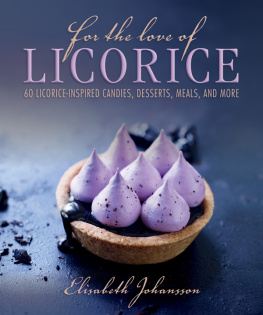
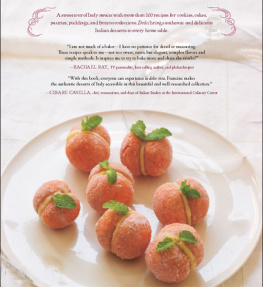

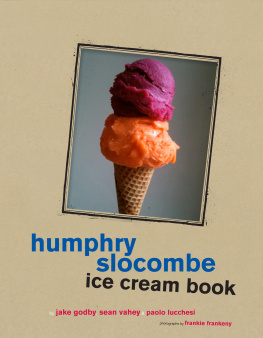
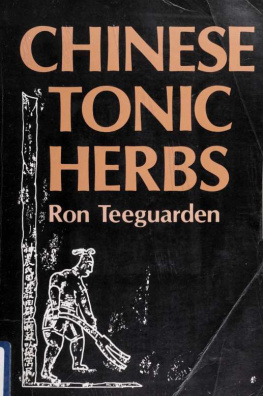


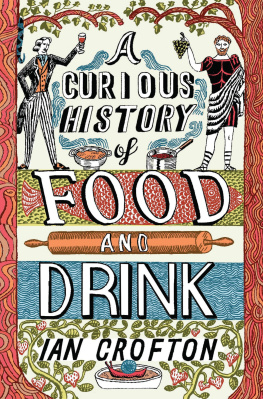
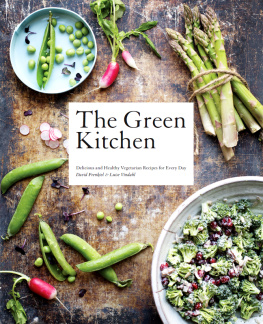

 CONTENTS
CONTENTS  LICORICE FACTS: INTERESTING READING ABOUT THE BEST AND TASTIEST ROOT IN THE WORLD RECIPES: LICORICE IN EVERYTHING FROM PRALINES, ICE CREAM, AND PASTRIES TO CHOCOLATE MOUSSE, FISH SOUP, AND SCHNAPPS TASTE, EXPERIMENT, MORE FACTS: TIPS AND ADVICE I HAVE WORKED WITH LICORICE IN DIFFERENT FORMS FOR MANY YEARS, AND I LOOK FORWARD TO SHARING THOSE EXPERIENCES AND RECIPES WITH YOU. My great interest in licorice began when I first had the opportunity to try licorice as a seasoning. I was never a big fan of licorice candy, but when I discovered the possibilities licorice had as a seasoning, it was a real aha moment for me.
LICORICE FACTS: INTERESTING READING ABOUT THE BEST AND TASTIEST ROOT IN THE WORLD RECIPES: LICORICE IN EVERYTHING FROM PRALINES, ICE CREAM, AND PASTRIES TO CHOCOLATE MOUSSE, FISH SOUP, AND SCHNAPPS TASTE, EXPERIMENT, MORE FACTS: TIPS AND ADVICE I HAVE WORKED WITH LICORICE IN DIFFERENT FORMS FOR MANY YEARS, AND I LOOK FORWARD TO SHARING THOSE EXPERIENCES AND RECIPES WITH YOU. My great interest in licorice began when I first had the opportunity to try licorice as a seasoning. I was never a big fan of licorice candy, but when I discovered the possibilities licorice had as a seasoning, it was a real aha moment for me. LICORICE ( GLYCYRRHIZA ) The licorice roots Greek name, Glycyrhiza is a combination of the words glycy , sweet, and rhiza , which are all roots. In English, licorice, licorice root, sweet wood, and sweet licorice are common terms. The British spelling is liquorice, while in American English it is spelled licorice.
LICORICE ( GLYCYRRHIZA ) The licorice roots Greek name, Glycyrhiza is a combination of the words glycy , sweet, and rhiza , which are all roots. In English, licorice, licorice root, sweet wood, and sweet licorice are common terms. The British spelling is liquorice, while in American English it is spelled licorice.
 REFINED LICORICE PRODUCTS Licorice is the raw material.
REFINED LICORICE PRODUCTS Licorice is the raw material.  Licorice roots from different areas also look different. To the left are roots from Iran.
Licorice roots from different areas also look different. To the left are roots from Iran.